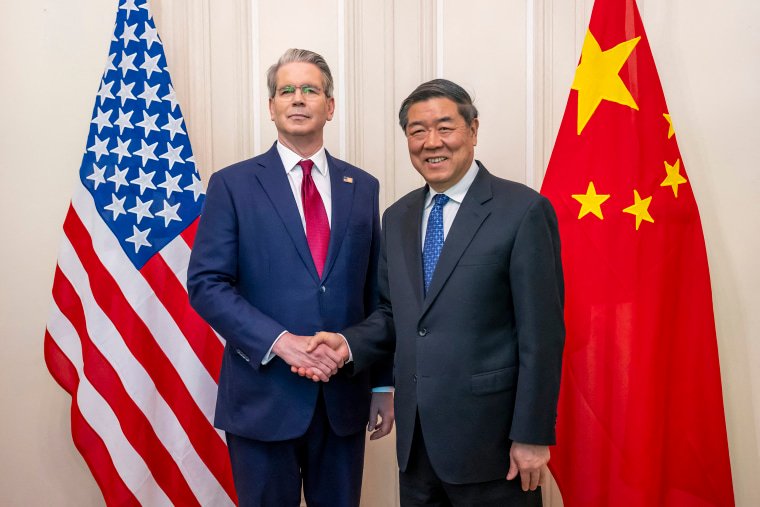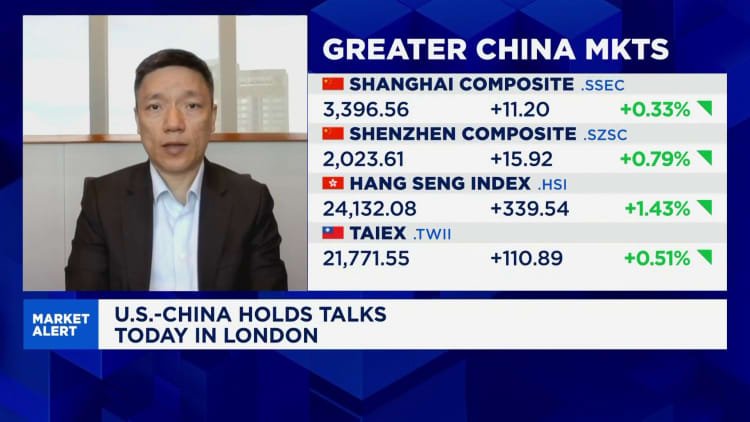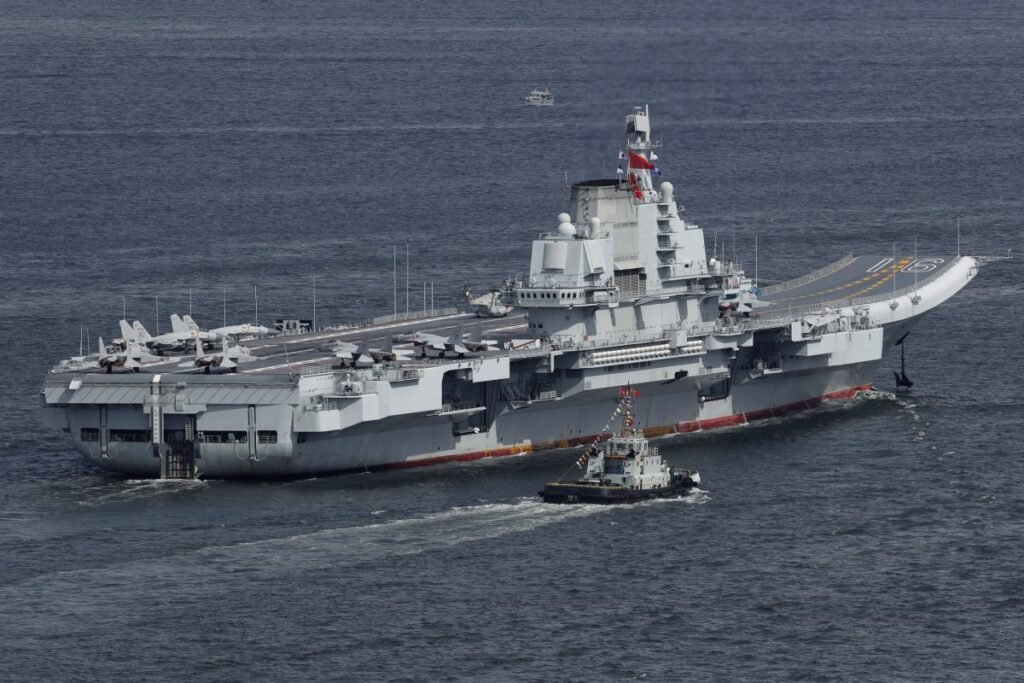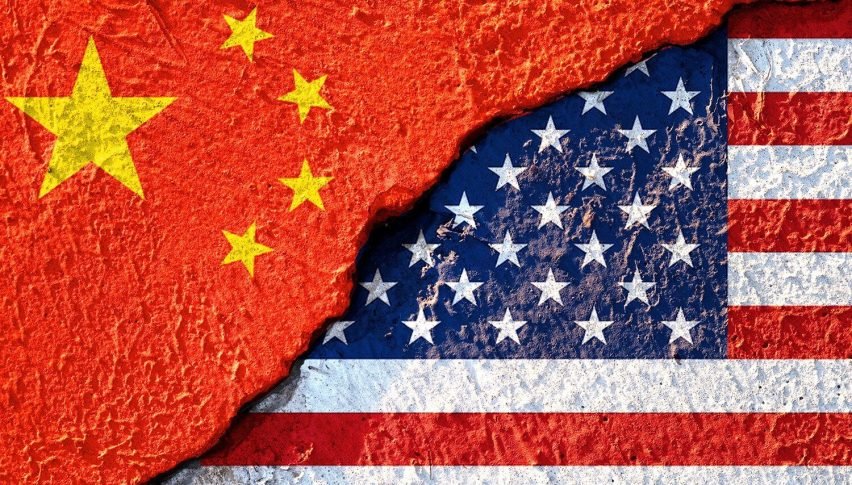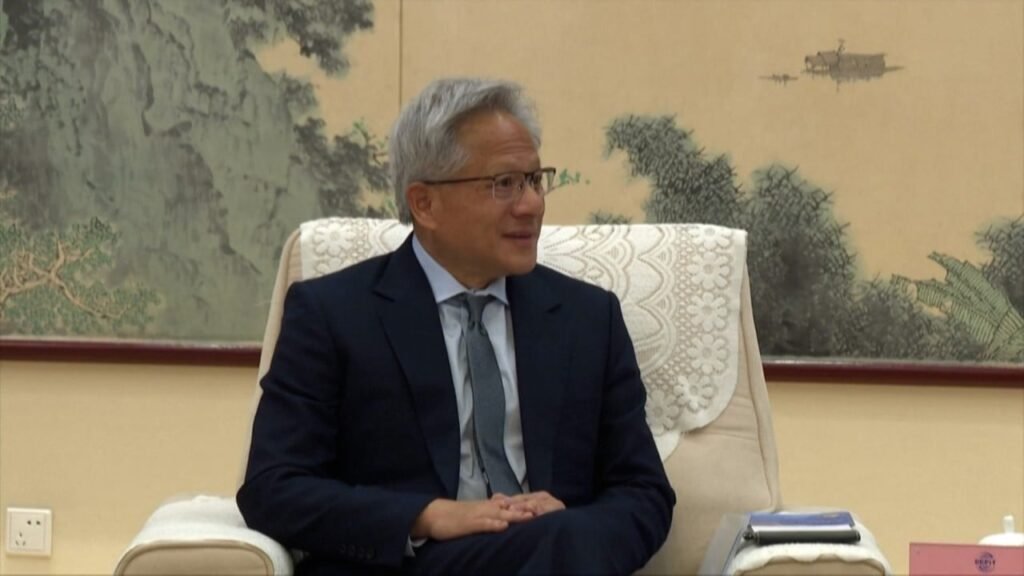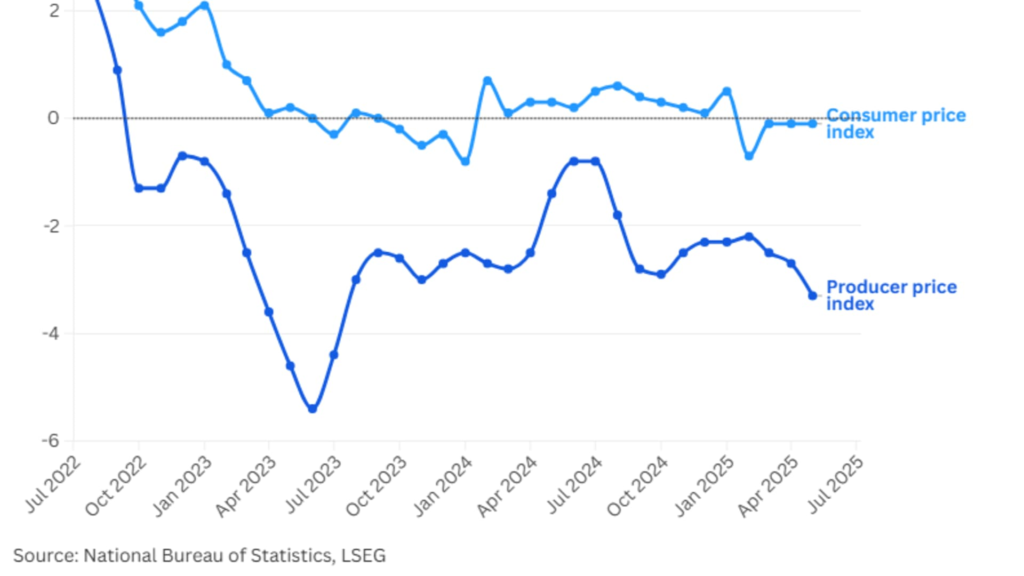It is 10 years since Beijing announced an ambitious plan called Made in China 2025 to transform the country from “a low-cost manufacturing base into a high-tech superpower”.
President Xi Jinping’s policy aimed for China to be world leader in a range of industries, from advanced computing to aerospace, and came with big investments in related technology like artificial intelligence and electric vehicles.
A decade on, analysts told the ABC the plan had been “hugely successful”, despite US government efforts to thwart it.
China economist Max Zenglein said Made in China had been “the cornerstone of Chinese industrial policy and its ambitions to climb up the value chain”.
“And, more importantly, to strengthen China’s position as a global manufacturing powerhouse,” said Dr Zenglein, chief economist at the Mercator Institute for China Studies in Berlin.
Electric vehicles, 5G success
Chinese car maker BYD is one of the world’s largest EV companies.
(ABC News: Brant Cumming)
Former Biden White House emerging technology adviser Lindsay Gorman echoed that sentiment, saying Made in China had been “incredibly” successful.
“Any analysis of People’s Republic of China competitiveness across these 10 areas has to acknowledge that China is either a global leader or close follower in almost all of them,” said Ms Gorman, managing director of the German Marshall Fund’s technology program in Washington.
Lindsay Gorman says China’s future plans will build on the success of Made in China 2025. (Supplied)
She highlighted two examples of that success, including how Huawei grew to lead the world in 5G and advances in clean energy.
“In new energy storage and vehicles — areas identified by Made in China 2025 — China has also succeeded beyond the plan’s wildest dreams, building out electric vehicles that threaten to up-end traditional automotive sectors,” she told the ABC.
Chinese company BYD surpassed Telsa in 2024 to become the largest electric vehicle maker in the world.
However, Ms Gorman added China had not had as much success in some industries, like commercial aviation.
“In others [industries] like biotechnology, the People’s Republic of China has seen some success and is poised to grow further in an era of big data and genetics applied to medicine,” she added.
President Trump found plan ‘insulting’
US President Donald Trump and Chinese President Xi Jinping in Japan in 2019, after the first US tariffs were implemented. (AP: Susan Walsh, File)
In 2018, Made in China caught the attention of US President Donald Trump during his first stint in the White House.
Some of the first tariffs the Trump administration imposed on China then specifically referenced Made in China, Harvard Business School analysis provided to the ABC showed.
“The United States will impose a 25 per cent tariff on $50 billion of goods imported from China containing industrially significant technology, including those related to the ‘Made in China 2025’ program,” said a memorandum signed by Trump in March 2018.
In May that same year, Mr Trump’s trade delegation to Beijing explicitly demanded that China stop subsidising high-tech sectors related to Made in China such as robotics and clean energy vehicles, US media reported.
Following the US backlash, references to Made in China in Chinese state media and official documents “dropped precipitously” from June 2018, but China’s industrial ambitions continued, the Harvard analysis said.
Mr Trump later told US media that “China got rid of their China ’25 because I found it very insulting”.
Recently in China, state media have been lauding the success of programs linked to Made in China without directly referencing the plan.
Articles and social media posts have highlighted numerous high-tech advancements including in artificial intelligence and sixth-generation fighter jets.
Dr He-Ling Shi, from Monash University, said state media was “obligated to sing praises” because 2025 marked the final year of the plan.
He said it was hard to know from state media whether the technological advancements detailed in the stories were real or a “roadshow”.
The ABC reached out to multiple analysts in China for this story, but none responded to interview requests.
Dr Shi also said the Biden administration had been effective at preventing China from advanced manufacturing of computer chips.
He said Huawei was a prime example.
“From a technological point of view, Huawei’s mobile phone technology is still two to three generations behind [Apple].”
Threat of new tariffs looms
Workers assemble circuit boards on a production line in China. (Reuters: Bobby Yip)
Mr Trump had promised to impose an additional 10 per cent tariff on goods from China on his first day in office, but didn’t mention specific tariffs in his inaugural address as he was sworn in as the 47th US president.
Instead, Mr Trump said the US would collect “massive amounts” of income from foreign trade duties.
Mr Trump would also issue a broad trade memo that stopped short of immediate tariffs but directed federal agencies to evaluate US trade relationships with China, Canada and Mexico, a Trump administration official added.
China’s Vice President Han Zheng attended Mr Trump’s inauguration, which was seen as a gesture of goodwill given that China was only represented by its ambassador at the previous two US presidential inaugurations.
Mr Xi and Mr Trump spoke on the phone on Friday ahead of the inauguration.
Mr Trump described the conversation as “a very good one” while Mr Xi said they both hoped for a positive start to US-China relations.
The relationship between the two leaders started well during Mr Trump’s first presidency but deteriorated as the trade war began.
Professor William Kirby from Harvard Business School said the dynamic was now shaped by a “mutual paranoia” in which each side believes the other is “out to undermine its national security”.
He said the “unilateral American imposition of tariffs which began the trade war with China was to nobody’s benefit” and it was unclear how China would respond to fresh US tariffs.
“I would expect there to be some greater form of retaliation,” Professor Kirby added.
Dr Zenglein, from the Mercator Institute for China Studies, said Mr Trump would be dealing with “a very different” and “well prepared” China.
“I think there is a risk of underestimating how well China has prepared for more conflict and its willingness to retaliate,” he said.
“They will not be able to just hit back with tariffs, but they will hit also to inflict and maximise pain.”
Experts said there was no clear or public replacement plan for Made in China, but Beijing is expected to publish its 15th Five Year Plan this year, covering 2026 to 2030.
ABC/Reuters

